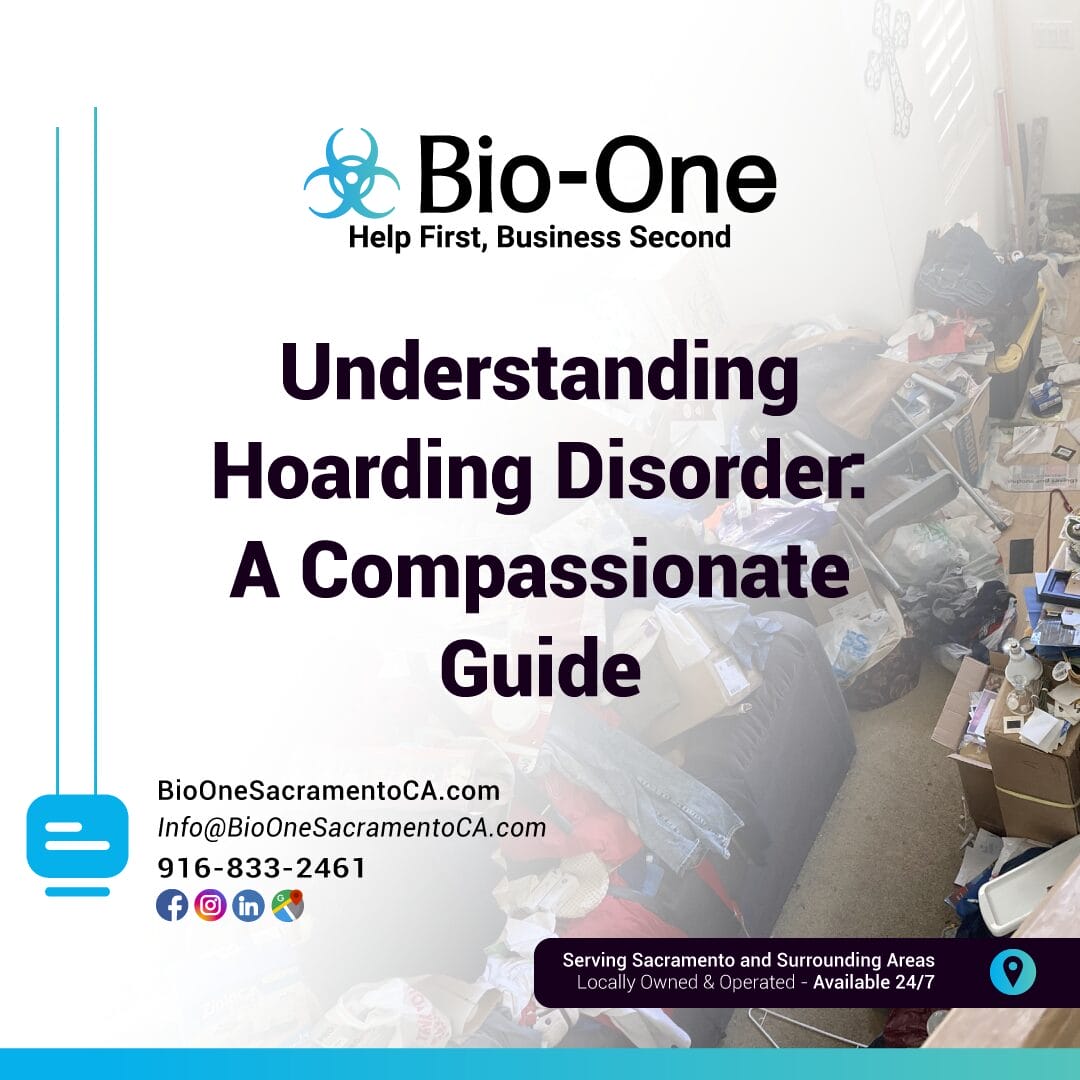
It’s easy to joke about being a "hoarder" when your closet is a bit too full or your desk is covered in papers. However, for some individuals, the inability to discard items goes far beyond simple clutter. Hoarding disorder is a complex mental health condition that can have profound effects on a person's life and the lives of those around them. This guide aims to shed light on what hoarding disorder is, its impact, and how to find help.
What is Hoarding Disorder?
Hoarding disorder is characterized by a persistent difficulty in discarding or parting with possessions, regardless of their actual value. This difficulty results from a perceived need to save the items and the distress associated with discarding them. The accumulation of possessions clutters living areas to the point that their intended use is compromised.
Imagine a kitchen where the counters, stove, and table are so covered with items—old mail, newspapers, empty containers—that you can no longer prepare a meal. Or a bedroom where the bed is buried under clothes and boxes, forcing the person to sleep on a small section of the couch. This is the reality for someone with hoarding disorder. It's not about being lazy or messy; it's a condition rooted in powerful emotional and psychological attachments.
Common Symptoms and Behaviors
Recognizing the signs of hoarding disorder is the first step toward understanding it. Key behaviors include:
- Acquiring and failing to discard a large number of items: This often includes things that seem useless to others, like junk mail, old newspapers, or broken appliances.
- Severe clutter in living spaces: Rooms become unusable for their original purpose. Pathways through the clutter may be narrow and winding.
- Strong emotional distress at the thought of discarding items: Individuals may feel intense anxiety, grief, or guilt when faced with getting rid of things.
- A belief that possessions are unique or will be needed later: They may attach significant meaning to objects that others see as trivial.
- Social withdrawal and isolation: Embarrassment or shame about the state of their home can lead individuals to avoid visitors and social interaction.
The Psychological and Emotional Impact
Living with hoarding disorder takes a heavy toll. Individuals often experience significant anxiety, depression, and feelings of shame. The clutter can create an unsafe and unsanitary environment, leading to health risks, fire hazards, and conflicts with landlords or neighbors.
The impact extends to families as well. Relatives, especially those living in the same home, can feel frustrated, helpless, and resentful. Children of parents with hoarding disorder may grow up in chaotic environments that affect their development and social lives. Spouses and partners might feel their relationship is secondary to the "stuff," leading to serious strain and conflict.
Possible Causes and Risk Factors
There isn't a single cause of hoarding disorder, but several factors can contribute to its development:
- Genetics: The condition often runs in families, suggesting a possible genetic link.
- Brain Function: Some studies indicate that people with hoarding disorder have differences in brain activity related to decision-making and emotional regulation.
- Traumatic Events: For some, hoarding begins after a stressful or traumatic life event, like the death of a loved one, a divorce, or a major loss. The possessions may serve as a source of comfort or a way to preserve memories.
- Co-occurring Conditions: Hoarding disorder frequently appears alongside other mental health conditions, such as major depressive disorder, anxiety disorders, and obsessive-compulsive disorder (OCD).
Treatment and Management Strategies
The good news is that hoarding disorder is treatable. Recovery is a journey that requires patience and professional support.
- Cognitive-Behavioral Therapy (CBT): This is the most effective treatment for hoarding disorder. A therapist works with the individual to understand the thoughts and beliefs behind their attachment to possessions. They learn new ways to think about their belongings and develop skills for sorting, organizing, and discarding items.
- Medication: Antidepressants, particularly those that affect serotonin levels, can be helpful for some individuals, especially when hoarding co-occurs with depression or anxiety.
- Skills Training: Practical training in decision-making, organization, and problem-solving helps individuals build confidence in managing their possessions.
- Support Groups: Connecting with others who have similar experiences can reduce feelings of isolation and shame, providing a community for mutual encouragement.
How to Support Someone with Hoarding Disorder
If you have a friend or family member who you believe has hoarding disorder, your support can be crucial. However, it's important to approach the situation with care and compassion.
- Educate Yourself: Learn as much as you can about the disorder. Understanding that it's a mental health condition, not a choice, will help you approach them with empathy.
- Communicate with Care: Express your concerns gently and without judgment. Use "I" statements, such as "I am worried about your safety," instead of accusatory language like "You need to clean this mess."
- Don't Clean for Them: A surprise "clean-out" can be traumatic and counterproductive. It doesn't address the underlying issues and can destroy trust, often making the hoarding worse in the long run.
- Encourage Professional Help: Gently suggest they speak with a doctor or a mental health professional. Offer to help them find resources or even go with them to an appointment.
- Focus on Safety: Prioritize harm reduction. Work with them to clear pathways, ensure smoke detectors are working, and address any immediate health hazards. Small, collaborative steps are more effective than big, forced changes.
- Take Care of Yourself: Supporting someone with hoarding disorder can be emotionally draining. Seek your own support through therapy or support groups for families.
Hoarding disorder is a serious and challenging condition, but with the right support, understanding, and treatment, individuals can reclaim their lives and their homes. By fostering compassion and reducing stigma, we can help create a path toward healing.
References
- Frost, R. O., & Steketee, G. (2010). Stuff: Compulsive Hoarding and the Meaning of Things. Houghton Mifflin Harcourt.
- American Psychiatric Association. (2013). Diagnostic and Statistical Manual of Mental Disorders (5th ed.). Arlington, VA: American Psychiatric Publishing.
- National Institute of Mental Health. "Hoarding Disorder." Retrieved from https://www.nimh.nih.gov/
- Mayo Clinic. "Hoarding Disorder - Symptoms and Causes." Retrieved from https://www.mayoclinic.org/
- International OCD Foundation. "Hoarding Disorder Basics." Retrieved from https://iocdf.org/
- Cleveland Clinic. "Hoarding Disorder." Retrieved from https://my.clevelandclinic.org/


